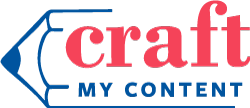Part 2 of the Sucky Candidate Experience? Series: Nailing candidate updates when you’re very busy and important
Good candidate communication is easy to achieve, and yet… rarely done.
Unfortunately, the biggest thing impacting your ability to communicate consistently is a lack of time. That’s because a vacancy can sometimes attract hundreds of applications, but also because, recruitment processes are run alongside regular operations. So, hiring managers are taken offline as they dance between their regular operational and managerial responsibilities as well as shortlisting and interviewing.
We know up front that finding time to send updates and provide a ‘hands on’ candidate experience is going to be an issue.
So, this post will help you plan and structure your updates so they can be pre-written and semi-automated; ready to send with the click of a button as candidates move through your recruitment process.
1. Map your shortlisting process
In Part 1: How to Exorcise the Ghost with Personalised Recruitment Updates, I tasked you with mapping your shortlisting process.
Before you advertise a role, you and the hiring team will have a conversation about your shortlisting process and timelines. Right?
Whether to use:
psychometric testing
scenario based assessment projects
video and/or phone interviews
assessment centres
face to face interviews.
And, when will each be held?
Best practice recruitment would see you establish clear timelines for your shortlisting, so you’re all ready and available to review applications and interview on time.
Once you know what’s involved, you can create the updates for each stage.
2. Create a flowchart for key candidate touchpoints
This one’s best explained with a fancy picture, don’t you think?
Depending how much of an experience you’re wanting to provide, your touchpoints could just be invitations, or FAQs and recruiter tips for each stage, on the day reminders (email and/or SMS), post event thank yous and 'what’s next’, and in the event of longer assessment times, sprinkling in some extra special facts and insights.
AKA, the cherries: Where are the opportunities to add value, extra details and a special touch?
(If we work together, this is the communication process I’ll map out with you to turbo charge your candidate experience. You’re welcome.)
3. Write your candidate updates before recruitment begins
This article is about nailing your candidate updates while busy, which means I’m advocating use of templated emails. Heck. Why wouldn’t you?
Email templates are bloody awesome… when they’re written for humans.
You’re aiming for the perfect blend of personalisation *and* automation. Candidates don’t actually expect you to manually write out a hundred different emails. But they do expect to be treated like they’re a human and not a number. Your job is to write them in a way that makes automation unobvious.
Refer to your new flowchart and write the required email updates to load as templates in your ATS. Create them in advance because we all know once you’re in the throes of shortlisting and interviews, you won’t have free time to prioritise good communication (which is precisely why it doesn’t happen).
Write all updates in your distinct employer brand voice to ensure a consistent experience throughout. If you’re really good, let them flow and tell your brand story.
4. Automate your automatable updates
Once email templates are loaded in your ATS, you can create a workflow for the role and move candidates through as their application progresses.
If you don’t have an ATS, simply create your updates in a Word doc and copy:paste into your mail provider at each milestone.
You may also be able to leverage other recruitment automation tools like chatbots, your candidate relationship management platform, pre-recorded video interviews, and scheduling tools for booking interviews. Any time saved with tech can be reinvested into enhancing the candidate experience.
5. Be transparent about delays
This is another thing that can trip some recruiters up – unplanned delays or setbacks. Covid-19 is the best example of an external event impacting a recruitment process, however, you may find funding suddenly pulled, or the hiring manager falls ill and is unexpectedly off work for a few weeks.
Life happens. Candidates will understand. What’s more important is you don’t leave them hanging without any contact.
While this one can’t be automated, it doesn’t take much to write, “Unfortunately, something’s come up that’s impacting our ability to continue recruitment. / We need to delay for two weeks until the hiring manager feels better and is back on deck. Can you hold on for us?”
Good candidate communication starts with good planning
If you really want to enhance your candidate experience, plan what you need to say, when and *how* you’ll say it. Maintaining consistent and effective candidate communication can happen when you start with good planning, the right tools, and a commitment to do better.
<Keep reading> #3 Writing rejection emails that empower (and don’t crush tender hearts)

